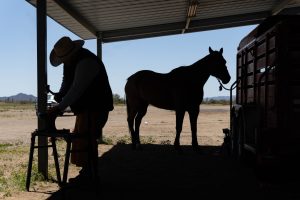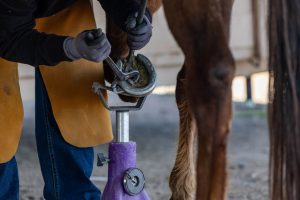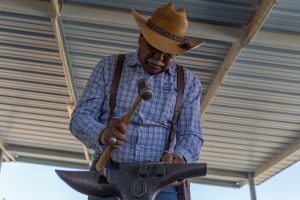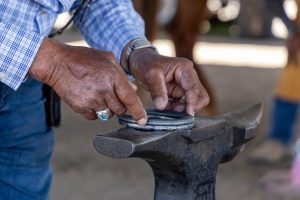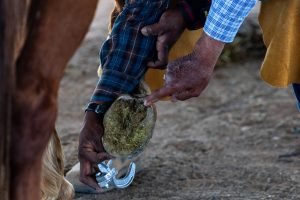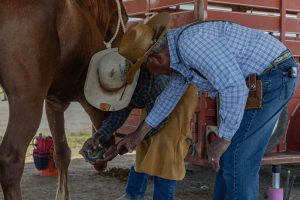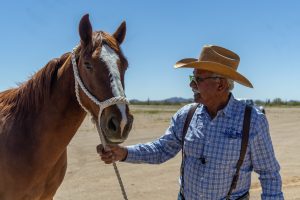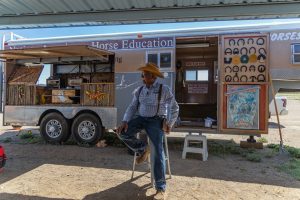- Slug: BC-CNS-Farrier Education. 590 words.
- 10 photos available (thumbnails, captions below).
- Video available.
By Julia Schamko
Cronkite News
TUCSON – At 83 years old, George Goode describes every day as a “blessing” as he makes the two-hour commute to Sells to teach local Native Americans farrier education.
It was 1972 when Goode started his horseshoeing school in Tucson. Over a half-century later, he retired and founded the nonprofit Native American Horse Education Foundation in hopes of bringing a new mindset to Indigenous communities.
“Out of all the years and all the reservations in the United States, there are no programs out there teaching our youth, our people that have horses, how to trim and shoe their horses’ feet correctly,” Goode said.
Despite horses being a vital part of Native American communities, few Natives know how to properly care for their horses to promote lasting health, he said.
“We like our horses but we don’t know how to love our horses,” Goode said. “Through time, we use horses sort of as a piece of machinery. If they didn’t have a purpose, we’d get rid of them.”
Goode explained that due to the added weight of a rider on a horse, horses’ feet wear at a faster rate than if they were roaming free in the wild. If the horseshoes are not taken care of and replaced within an eight-week window, the horses can become crippled and lame. Often when this happens, the horses are killed.
In recent years, it has also become more costly for horse owners to keep up with the constant replacement of their horses.
This is where the need for farriers comes in.
Goode and his students, most of whom are Indigenous, start at 9 a.m., working with horses brought in by locals for horseshoe replacement. Though currently teaching out of the rodeo grounds in Sells, Goode’s use of a mobile horseshoeing unit allows him to teach and travel across Arizona.
The foundation offers programs ranging from three days to 12 weeks in which students learn how to properly reshoe a horse, along with how to run their own business once they’ve completed the course.
According to Goode, it takes new farriers about four hours to finish shoeing one horse. By the end of the course and with experience, however, a master farrier can shoe anywhere from six to seven horses in a day. Since he started the foundation, Goode estimates he has trained between 120 and 140 students.
For student-turned-instructor Adrian Morgan, being a farrier has not only kept him employed but living a “healthy” and “happy” life.
“I would have never thought of working here as an instructor. I just thought, OK, I’m just going to shoe horses the rest of my life. But now, this opened up a new door for me. … I’ve got a new career path,” Morgan said.
Morgan learned the farrier trade from Goode as a young kid in the early 2000s. Though not intending to make a career of the trade, he received the confidence boost and business skills necessary to become a successful farrier.
“He (Goode) taught me how to just really take this to another level,” Morgan said. “It’s not just shoeing local horses. I go all over these states shoeing for people.”
Goode hopes that through his program, Native Americans will not only learn to care for their own horses but to pass on that knowledge to younger generations.
It’s a unique trade and difficult work, Goode said, but is both a useful and financially beneficial trade to be well-versed in.
“This is the only job you can get a kick out of,” Goode joked.
